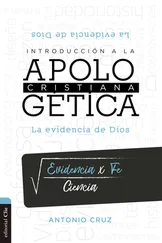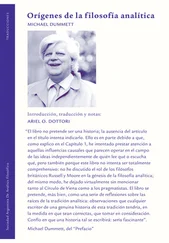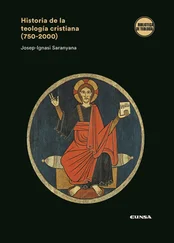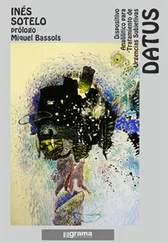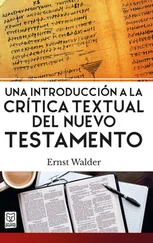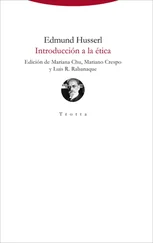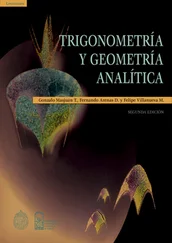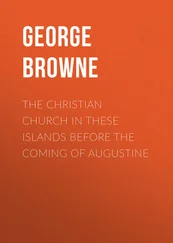12. Ver Alvin Plantinga, The Nature of Necessity (Oxford: Oxford University Press, 1974); y Brian Leftow, God and Necessity (Oxford: Oxford University Press, 2012). Ver tambien la reciente propuesta de Hugh J. McCann, Creation and the Sovereignty of God (Bloomington: Indiana University Press, 2012).
13. Una vez más, la proliferación de “lecturas”, “manuales” y “complementos” son la evidencia de la amplitud y profundidad del trabajo emprendido; p.ej., Oliver D. Crisp, ed., A Reader in Contemporary Philosophical Theology (New York: T & T Clark, 2009); Michael C. Rea, ed., Oxford Readings in Philosophical Theology , 2 vols. (Oxford: Oxford University Press, 2009); Thomas P. Flint y Michael C. Rea, eds., The Oxford Handbook of Philosophical Theology (Oxford: Oxford University Press, 2009); Charles Taliaferro y Chad Meister, eds., The Cambridge Companion to Christian Philosophical Theology (Cambridge: Cambridge University Press, 2010).
14. William J. Abraham, “Systematic Theology as Analytic Theology,” en Analytic Theology: New Essays in the Philosophy of Theology , ed. Oliver D. Crisp y Michael C. Rea (Oxford: Oxford University Press, 2009), p. 54.
15. Smith, “Metaphilosophy,” p. 2.
16. Oliver D. Crisp, “On Analytic Theology,” en Crisp y Rea, Analytic Theology , p. 35.
17. Ibíd ., pp. 37-38.
18. Michael C. Rea, Introduction to Crisp and Rea, Analytic Theology , pp. 3-4. Ver también Nick Trakakis, “Meta-Philosophy of Religion: The Analytic-Continental Divide in Philosophy of Religion,” Ars Disputandi 7 (2007): 179-220.
19. Rea, introducción, p. 4.
20. Ibíd ., pp. 5-6.
21. Ibíd ., p.7.
22. Ibíd ., p. 5, n. 5.
23. Ibíd ., p. 5, n. 6.
24. Ibíd .
25. Alan G. Padgett, “The Trinity in Theology and Philosophy: Why Jerusalem Should Work with Athens”, en Philosophical and Theological Essays on the Trinity , ed. Thomas McCall y Michael C. Rea (Oxford: Oxford University Press, 2009), p. 332.
26. Ibíd .
27. Ibíd .
28. Agradezco a Billy Abraham por insistir en este punto. El trabajo “modelo” sobre la metáfora en teología sigue siendo Janet Martin Soskice, Metaphor and Religious Language (Oxford: Oxford University Press, 1987).
29. Personaje de la mitología griega conocido porque ataba a sus víctimas a una cama a las que ajustaba su tamaño cortándoles o estirándoles los miembros. Se aplica la expresión a cuando se deforman los datos de una realidad para adaptarlos a una hipótesis previa. N.T.
30. Nicholas Wolterstorff, “To Theologians: From One Who Cares About Theology but Is Not One of You,” Theological Education (2005): 91-92.
31. Richard Swinburne, The Coherence of Theism , 2ª ed. (Oxford: Oxford University Press, 1993), p. 7.
32. Ver p.ej., Gregory of Nyssa, Against Eunomius 1.42, Nicene and Post-Nicene Fathers , ed. Philip Schaff, series 2 (1886–1889; repr., Peabody, MA: Hendrickson, 1994), 5:98-99 (Patrologia Graeca [= Patrologiae Cursus Completus : Series Graeca], ed. Jacques-Paul Migne [Paris, 1857– 1886], 45:460-61).
33. John Wesley, “Address to the Clergy,” en The Works of John Wesley , vol. 10, Letters, Essays, Dialogs, and Addresses (Grand Rapids: Zondervan, n.d.), p. 483.
34. Ibíd .
35. Ibíd ., pp. 491-92.
36. Ibíd ., pp. 490-91.
37. Esta parte procede en buena medida de mi trabajo, “Theologians, Philosophers, and the Doctrine of the Trinity,” en McCall and Rea, Philosophical and Theological Essays on the Trinity , pp. 340-48.
38. Stephen R. Holmes, The Quest for the Trinity: The Doctrine of God in Scripture, History, and Modernity (Downers Grove, IL: IVP Academic, 2012), p. 3
39. Ver p.ej., Jean-Luc Marion, God Without Being , trad. ing. Thomas A Carlson (Chicago: University of Chicago Press, 1991); y John Milbank, The Word Made Strange (Oxford: Blackwell, 1997). Ver también el debate en Daniel P. Horan, Postmodernity and Univocity: A Critical Account of Radical Orthodoxy and John Duns Scotus (Minneapolis: Fortress, 2014).
40. Thomas Williams, “The Doctrine of Univocity Is True and Salutary,” Modern Theology 21 (2005): 575-85. Ver también William P. Alston, Divine Nature and Human Language: Essays in Philosophical Theology (Ithaca, NY: Cornell University Press, 1989), pp. 17-117; y Keith E. Yandell, “Not Confusing Incomprehensibility and Ineffability: Carl Henry on Literal Propositional Revelation,” Trinity Journal (2014): 61-74.
41. P.ej., Jonathan D. Jacobs, “The Ineffable, Inconceivable, and Incomprehensible God: Fundamentality and Apophatic Theology,” en Oxford Studies in Philosophy of Religion , forthcoming.
42. Más exactamente, Barth dice que la analogia entis (que los intérpretes suelen considerar la base de toda teología natural) es un “invento del Anticristo”, Doctrine of the Word of God , p. 13.
43. P.ej., Richard Swinburne, The Coherence of Theism (Oxford: Oxford University Press, 1977); y Swinburne, The Existence of God (Oxford: Oxford University Press, 1979 [2004]). Como ejemplos de obras más reciente ver Moreland y Craig, Blackwell Companion to Natural Theology ; y James F. Sennett y Douglas Groothuis, eds., In Defense of Natural Theology: A Post-Humean Assessment (Downers Grove, IL: IVP Academic, 2005).
44. Fred Sanders, “The State of the Doctrine of the Trinity in Evangelical Theology,” Southwestern Journal of Theology 47 (2005): 169
45. Richard A. Muller, Post-Reformation Reformed Dogmatics: The Rise and Development of Reformed Orthodoxy, ca. 1520–ca. 1725 , vol. 3, The Divine Essence and Attributes (Grand Rapids: Baker Academic, 2003), p. 41.
46. Robert W. Jenson, Systematic Theology , vol. 2, The Works of God (Oxford: Oxford University Press, 1999), p. 8 n. 35.
47. Catherine Mowry LaCugna, “Philosophers and Theologians on the Trinity,” Modern Theology 2 (1986): 172.
48. Grandes ejemplos de ello son Richard Cross, Duns Scotus on God (Aldershot, UK: Ashgate, 2005); Cross, The Metaphysics of the Incarnation: Thomas Aquinas to Duns Scotus (Oxford: Oxford University Press, 2002); Eleonore Stump, Aquinas (New York: Routledge, 2003); Jeffrey E. Brower, Aquinas’s Ontology of the Material World: Change, Hylomorphism, and Material Objects (Oxford: Oxford University Press, 2014); y J. T. Paasch, Divine Production in Late Medieval Trinitarian Theology: Henry of Ghent, Duns Scotus, and William Ockham (Oxford: Oxford University Press, 2012).
49. Alvin Plantinga, Does God Have a Nature? (Milwaukee: Marquette University Press, 1980), p. 47.
50. Ibíd .
51. Ibíd .
52. Kenneth Surin, “The Trinity and Philosophical Reflection: A Study of David Brown’s The Divine Trinity ,” Modern Theology 2 (1986): 239-40.
53. Nicholas Wolterstorff, “Between the Pincers of Increased Diversity and Supposed Irrationality,” en God, Philosophy, and Academic Culture: A Discussion Between Scholars in the AAR and APA , ed. William J. Wainwright (Atlanta: Scholars Press, 1996), p. 20. Ver también Wolterstorff, “Is It Possible and Desirable for Theologians to Recover from Kant?,” Modern Theology 14 (1998): 1-18.
54. Wolterstorff, “Between the Pincers,” p. 20.
55. Alvin Plantinga, Warranted Christian Belief (Oxford: Oxford University Press, 2000), p. 30.
Читать дальше





